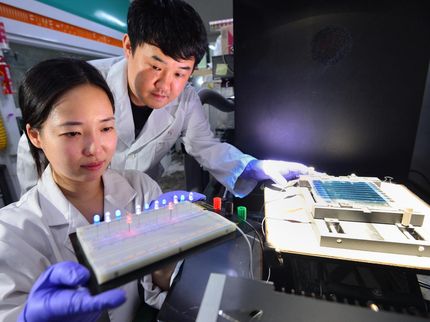Lawrence Livermore National Lab to explore spectral imaging to detect moisture in solar cells
A Lawrence Livermore National Lab engineer has been awarded $570,000 through the Department of Energy SunShot Initiative to explore spectroscopic technology as a means of detecting moisture buildup in solar photovoltaic cells.
Over the next two years, Mihail Bora, a Materials Engineering Division research team member at the Lab, will try to prove that spectral imaging can be used to evaluate the moisture content of PV modules and to create two-dimensional maps and models of water concentration. Bora will then use these results as a screening tool to help protect the modules from water damage. Water ingress can cause corrosion of metal parts, delamination and decrease the efficiency of solar cells.
"Our goal is to measure water content without destroying the photovoltaic modules and to remove uncertainty on how reliable the modules are over their long expected lifetimes," Bora said. "Reliability plays a tremendously important role in making solar competitive with other non-renewable energy sources because it allows project managers to more efficiently use its funds and may lead to a decrease in financing costs."
Bora's project builds off the team's previous testing with laminates and aims to answer questions critical to industry adoption, such as detection range, limits, accuracy and stability. The typical approach to addressing the problem, Bora said, is focused on water transport measurements in polymer membranes or controlled laboratory setups.
This project, Bora said, combines optics and reliability, two areas of core importance to Lawrence Livermore's mission.
Partners in the research included two solar manufacturers, MiaSolé HiTech Corp. and Prism Solar Technologies Inc.
Other news from the department science

Get the chemical industry in your inbox
By submitting this form you agree that LUMITOS AG will send you the newsletter(s) selected above by email. Your data will not be passed on to third parties. Your data will be stored and processed in accordance with our data protection regulations. LUMITOS may contact you by email for the purpose of advertising or market and opinion surveys. You can revoke your consent at any time without giving reasons to LUMITOS AG, Ernst-Augustin-Str. 2, 12489 Berlin, Germany or by e-mail at revoke@lumitos.com with effect for the future. In addition, each email contains a link to unsubscribe from the corresponding newsletter.



























































